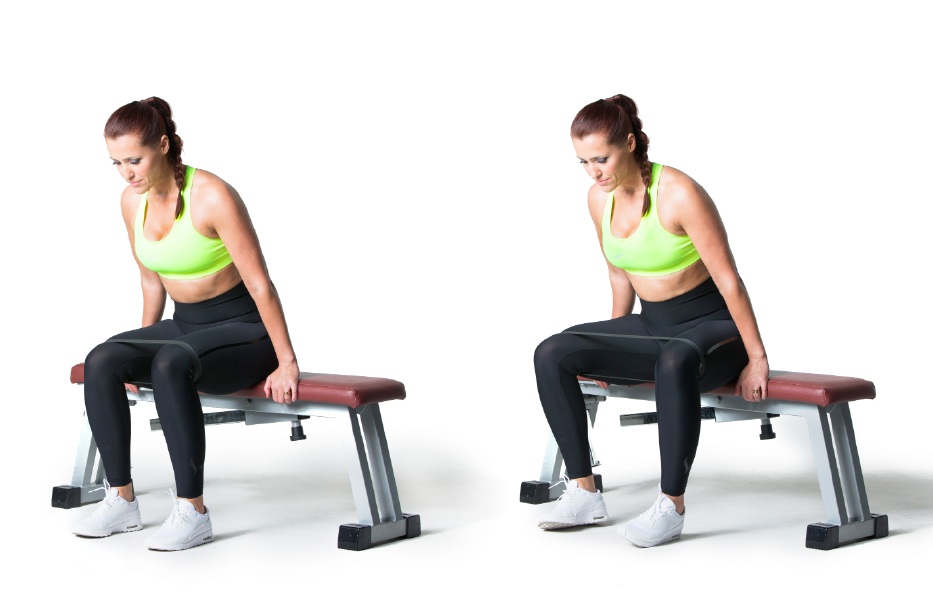Before getting back into exercise after having major abdominal surgery (because that’s exactly what a C-section is!) – you need to take certain recovery phases into account. The scar from your caesarean section can affect the nerves in your pelvic floor, which can manifest itself as a burning sensation in your urethra, pain in your clitoris and the feeling that you need to pee often, or pain in your hips.
In the first few weeks after a caesarean section, focus on recovery and rest as much as possible, but also refuel with nutritious food.
Ask for support and help during the first few weeks. Your job is to bond with your baby, feed the baby, sleep and relax. Learn how to get up and lie down correctly. Think about what you did when you were pregnant – I’m sure you rolled onto your side first and then helped yourself up using your hands, before lowering your legs over the side of the bed. Use the same method now and for some time to come.
The most common misconception after a caesarean section is that you don’t need to exercise your pelvic floor muscles. Pregnancy itself increases the risk of pelvic floor problems because the baby pushes down on the pelvic floor, making the connective tissue and muscles more lax than usual. It is very important to start exercising with your core and pelvic floor. That’s an order and not a recommendation (Not joking!).
Posture is affected during pregnancy as the belly grows and the centre of gravity shifts. You often see pregnant women with their ribs pushed upwards and their bottom carried under them to compensate for the weight of their belly. This weakens the core and as the pelvic floor is an important part of the core it is also impacted and needs to be strengthened. You might even have gone through the expulsion stage where the baby was pushing his or her head against the pelvic floor, bladder and rectum – so that’s another reason to do pelvic floor exercises.
Postpartum exercises may look simple to do but they are not easy! The challenge is trying to connect the various parts of your core – as breathing, finding a neutral position and working actively with your belly button and your pelvic floor requires focus and concentration. If you do them right, it will make your daily life a lot easier.
It is worth mentioning that your abdominal muscles are not cut during a caesarean section, but your connective tissue is, and it is extremely important that you understand how crucial it is to take your time to ensure that your recovery is as successful as possible. We need to retrain the core + pelvic floor connection. And we don’t do that through running, heavy strength training or traditional core classes.
Even if it has been 6–8 weeks since your surgery and the scar is healed and dry, that doesn’t mean ‘GO!’ – you need much more gentle workouts than that. Your scar might look good from the outside, but the inside needs more time. As I mentioned previously, your skin is made up of different layers and these layers take longer to heal than 6–8 weeks.
Restorative breathing
You can start doing this a few days after giving birth. This will reprogramme your whole core from your diaphragm down to your pelvic floor using breathing.
Our core is made up of four muscles:
- The pelvic floor (protects and supports internal organs)
- The diaphragm (our breathing muscle)
- The transverse abdominis (the muscle that goes around the whole torso and that will help you strengthen your core and heal abdominal separation).
- The deep back muscles (they stabilise the torso).
I’d also like to add the glutes (they provide pelvic and lumbar support).
They all work together when things are optimal, and you need to retrain these muscles after giving birth. When you breathe in, your diaphragm and pelvic floor move downwards, when you breathe out, your diaphragm and pelvic floor move upwards. The transverse abdominis is pulled in towards your spine. This is how the connection between the diaphragm + pelvic floor + transverse abdominis works. By breathing in and breathing out, you will strengthen your core’s function.
First, find your neutral position. Once you’ve learnt how to find your neutral posture, it’s time to learn restorative breathing so you can engage all your core muscles. The neutral position will allow you to breathe more easily and this will give you more stability.
- Sit on a chair/bench in front of the mirror. Sit on your sit bones and not your tailbone.
- Place your hands on the sides of your ribcage.
- Breathe in through your nose, allowing your ribcage and stomach to expand (think of opening an umbrella) so you feel them pressing against your palms. Feel how the space between your hipbones becomes wider, as if your hipbones are moving apart and your stomach and pelvic floor are relaxing. Don’t let your shoulders rise up as you breathe in.
- As you breathe out through your mouth, feel your palms move with your body again and your hips come closer together, and notice how your stomach contracts and your pelvic floor lifts slightly upwards.
Breathe in and out ten times to find your breathing pattern.
Now let’s connect your pelvic floor to your breathing – it’s important that you learn to contract and relax your stomach and pelvic floor. Walking around with your stomach and pelvic floor contracted is neither functional nor right. There are times when they should be contracted and there are times when they should be completely relaxed.
Breathe in through your nose again. When you breathe out: lift your pelvic floor as if you want to pull your vagina and rectum into your body, imagine you want to pick up a peanut or berry. The lift should be gentle and you should stop about halfway rather than lifting as far as you can. Breathe in again and relax your stomach and pelvic floor completely.

Try lying on your back and imagining that the distance between your tailbone and your pubic bone is like an accordion. Breathe in: open the accordion, breathe out: close the accordion (your tailbone and pubic bone move closer together).
Do these exercises every day, 10 breaths in and out and then 10 more connecting your pelvic floor exercises to your breath.
Walks
After a couple of weeks, you can start taking gentle walks outside. Start with 20 minutes and then increase by 10 minutes each day. Keep listening to the signals your body is sending you.
After around 6 weeks it will be time for your postnatal check. There, your GP will talk to you about your pelvic floor and check the appearance of your scar.
Am I ready for more strenuous exercise now? Not really!
Everyone is different and we all heal at different rates. Some might feel like starting after three weeks, while for others starting after six weeks feels too soon. Think about whether your scar has dried and healed, whether you feel reasonably confident in your body and whether everything looked good at the postnatal check – but you’re not ready if you’re experiencing pain every day.
Good exercises
- Curl ups
- Glute bridges
- Clamshells
Remember – use the breathing technique described above. Breathe in through your nose: hold, and breathe out through your mouth as you perform one curl up or one glute bridge or open your hip once if you’re doing clamshells.

Avoid activities such as running, crunches or jumping.
Give your body time to heal. We usually recommend giving yourself 1 year – it’s more realistic than giving yourself 6 months and stressing about it.
Photo Andreas Lundberg, Pär Olsson